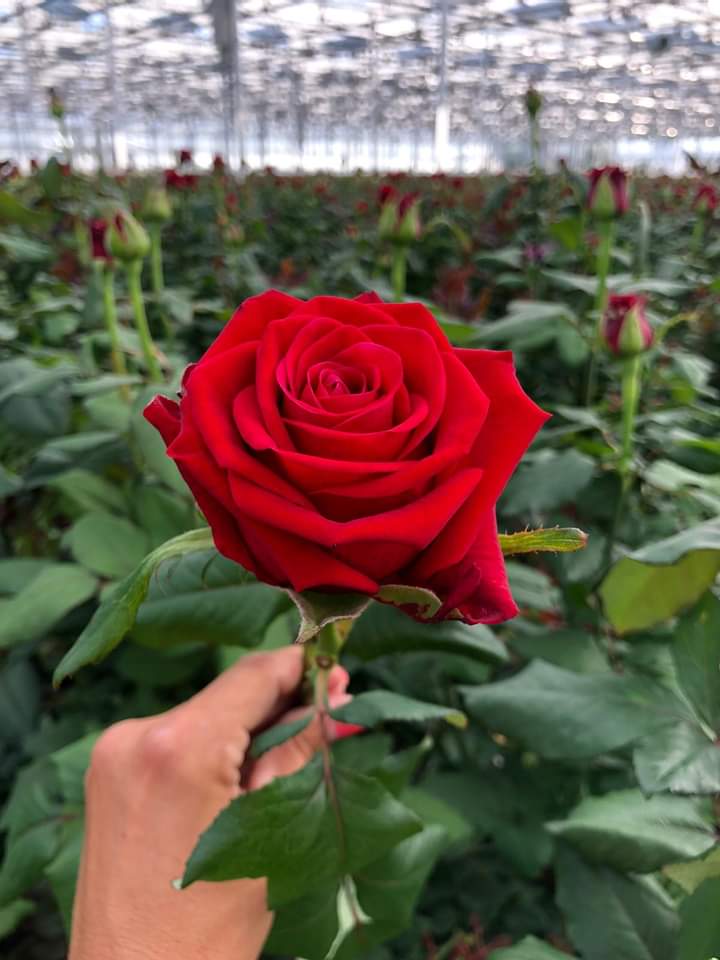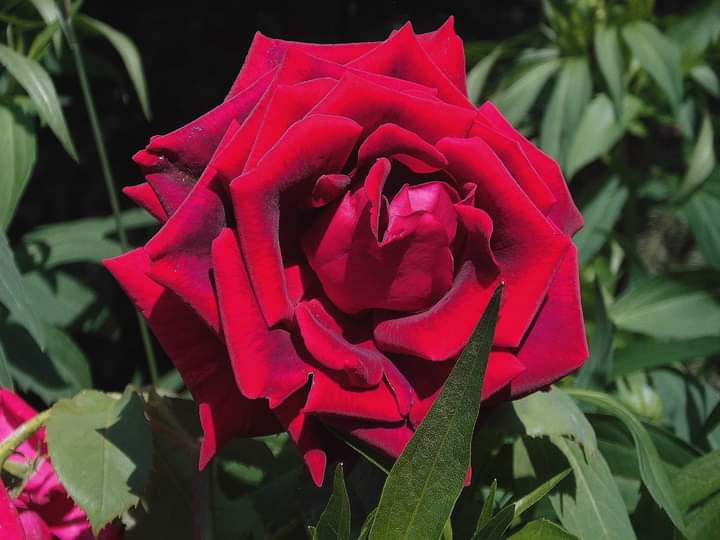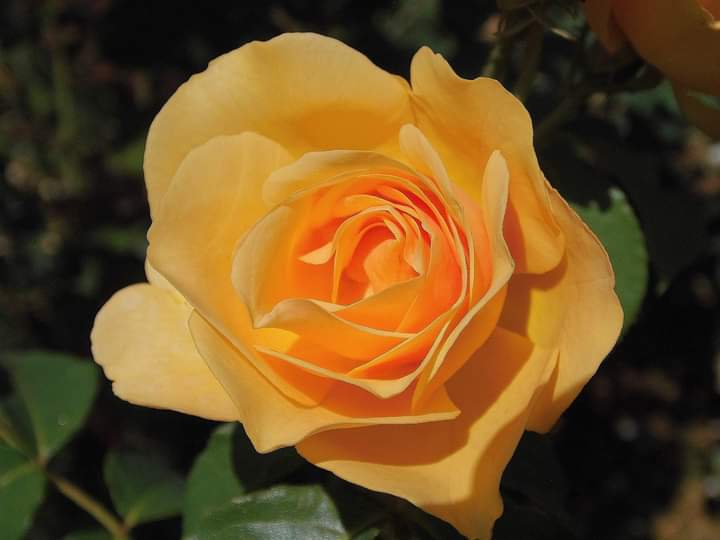What type of rose flowers are grown in Kenya?
Kenya grows roses very well due to its climatic characteristics. Roses are cultivated in some parts of Kenya. Roses are long-lived thorny shrubs that usually shed their leaves in winter and can grow up to 2-3 m tall. The flowers have 5 petals and come in white, pink, red, red, yellow, orange and many other eye-catching colors.
Kenya is known for growing a variety of rose flowers, especially in its flower industry. Some of the popular types of roses cultivated in Kenya include:
- Hybrid Tea Roses: These are the most common type of roses grown in Kenya for export. Hybrid tea roses have large, high-centered blooms and long, straight stems, making them ideal for the floral industry.
- Spray Roses: Spray roses produce multiple small blooms on a single stem, creating a cluster effect. They are popular for use in bouquets and floral arrangements.
- Sweetheart Roses: Sweetheart roses, also known as mini roses, are smaller in size compared to hybrid tea roses. They have multiple blooms per stem and are commonly used in mixed arrangements and wedding bouquets.
- Grandiflora Roses: Grandiflora roses are a cross between hybrid tea roses and floribunda roses. They produce large clusters of flowers on tall stems.
- Floribunda Roses: Floribunda roses have smaller blooms than hybrid tea roses but produce them in large clusters. They are known for their hardiness and continuous flowering.
- Ruffled Roses: Ruffled roses have unique, frilly petals that add a distinctive charm to floral arrangements.

The flower industry is a significant part of Kenya’s economy, with roses being one of the primary flowers cultivated for export to various international markets, including Europe, the United States, and Asia.
Where are roses grown in Kenya?
Roses are primarily grown in Kenya’s flower-growing regions, which are located in the highlands and plateaus of the country. The main areas for rose cultivation in Kenya are:
- Naivasha: Naivasha is one of the most important flower-growing regions in Kenya and is well-known for its rose farms. The area around Lake Naivasha has favorable climatic conditions, including the right altitude and temperatures, making it suitable for cultivating high-quality roses.
- Nairobi: The capital city, Nairobi, and its surrounding areas also have several flower farms that grow roses. These farms benefit from the city’s proximity to the international airport, allowing for efficient export of fresh cut flowers.
- Thika: Thika, located near Nairobi, is another region with a significant presence of rose farms.
- Eldoret: Eldoret, situated in the Rift Valley, is another area where roses are grown in Kenya. The region’s altitude and cool temperatures are favorable for rose cultivation.
- Nakuru: Nakuru, like Naivasha, is situated around Lake Nakuru and has suitable conditions for growing roses.

These regions offer favorable environmental conditions, including the right combination of altitude, temperature, and soil quality, which are essential for the successful cultivation of roses for the global export market. The flower industry is a vital sector in Kenya, and roses are one of the primary flower varieties cultivated for international trade.
Why are roses grown in Kenya?
Roses are grown in Kenya for several reasons, which have contributed to the country’s emergence as a major player in the global flower industry:
- Favorable Climate: Kenya’s high-altitude regions, such as Naivasha, Nairobi, Thika, and Eldoret, have a mild climate with relatively cool temperatures and abundant sunlight. These conditions create an ideal environment for the year-round production of high-quality roses.
- Favorable Geographic Location: Kenya’s proximity to the equator allows for a consistent twelve-hour day length throughout the year. This photoperiod stability helps regulate the flowering cycles of the roses, ensuring a steady supply of flowers for export.
- Abundance of Water Resources: Many of the flower-growing regions in Kenya, such as Naivasha and parts of the Rift Valley, have access to ample water resources, including natural lakes and rivers. This ensures a reliable water supply for irrigation, which is crucial for rose cultivation.
- Availability of Skilled Labor: The flower industry in Kenya has created numerous job opportunities, and there is a significant pool of skilled labor experienced in the art of growing and harvesting roses.
- Supportive Government Policies: The Kenyan government has been supportive of the flower industry and has implemented policies to encourage and facilitate flower exports. These policies include tax incentives, export promotion, and the establishment of dedicated flower auction centers.
- Global Demand: Roses are highly sought after in international markets, especially in Europe, the United States, and Asia. Kenya’s ability to supply roses throughout the year, even during winter in other countries, has made it an attractive source for fresh cut flowers.
- Economic Impact: The flower industry, including rose cultivation, is a significant contributor to Kenya’s economy. It generates employment, foreign exchange earnings, and investment in infrastructure development.
- Improved Infrastructure: Over the years, Kenya has invested in improving its infrastructure, including transportation and logistics. This has helped streamline the process of exporting flowers to international markets efficiently.
The combination of these factors has made Kenya a leading exporter of roses and other cut flowers, earning the country a reputation for producing high-quality and fresh flowers for customers around the world. Information about roses growing in Kenya >>
How much are roses in Kenya?
The cost of roses in Kenya can vary depending on several factors, including the type of rose, the grade and quality, the time of year, and the market demand. Additionally, prices may differ between local markets within Kenya and international markets where Kenyan roses are exported.

For locally sold roses within Kenya, the prices can range from a few Kenyan shillings for a single stem of a common variety to higher prices for premium or specialty roses. In local markets, factors such as the region, availability, and the presence of competing flower suppliers can influence the prices.
When it comes to roses exported from Kenya to international markets, the prices are typically quoted in US dollars per bunch or per stem. The prices for exported roses can vary widely based on the destination country, the specific market requirements, the season, and other factors.
As an example, in the international market, a bunch of standard, medium-length roses (e.g., Hybrid Tea Roses) can range from a few US dollars to around $10 or more, depending on various factors. Premium roses or specialty varieties may command even higher prices.
It’s important to note that the flower industry is dynamic, and prices can fluctuate based on supply and demand, changes in production costs, and global market conditions. Therefore, the prices mentioned here are just general estimates, and the actual prices may be different at any given time.
For the most accurate and up-to-date information on rose prices in Kenya, it is best to contact local flower farms, flower markets, or flower exporters who can provide specific pricing details based on your requirements and location. Why are roses popular in Kenya? Kenya Rose Varieties >>





